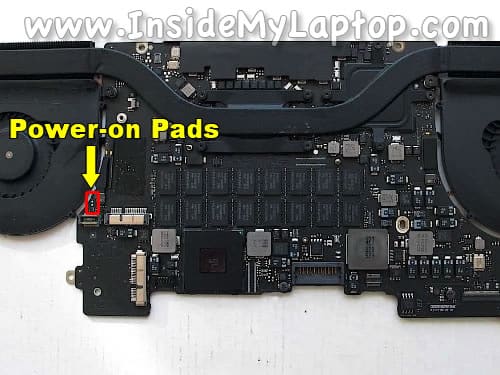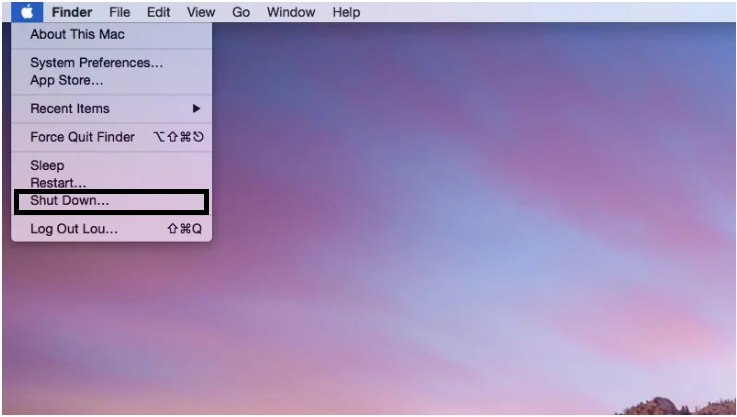Performing a SMC Reset has the potential to fix problems and performance related issues on Mac. You will find below the actual steps to Reset SMC on MacBook, Mac Mini and iMac.
Reset SMC On MacBook, Mac Mini and iMac

SMC or System Management Controller is a Microchip located on the Logic board of Apple computers using Intel processors.
SMC is responsible for functions like Battery Control, Battery Indicator Light, Temperature control, Light Sensing, Fan Speed, Keyboard backlights and other low-level functions.
Mac mini features the Apple T2 Security Chip — second-generation custom Mac silicon designed by Apple to make Mac mini even more secure. The T2 Security Chip consolidates several controllers into one, and includes a Secure Enclave coprocessor that provides the foundation for encrypted storage and secure boot capabilities. If you’re having trouble with your Mac, and a PRAM reset hasn’t worked, you may need to try reset SMC (System Management Controller) on your Mac. Why you should Reset SMC on your Mac Fans —The computer’s fans run at high speed although the computer is not experiencing heavy usage and is properly ventilated. If your Mac is acting up and you can’t figure out why, you might try resetting the NVRAM or the SMC Follow Macworld for more iPhone and Apple Updates! SMC Pneumatics direct to your door. Free fast shipping. 99% of our orders leave within 24 hours or less. Order online or call 1-800-660-0733. Se Habla Espanol.
Computer: Identifier: EFI Boot ROM version: SMC version: Mac mini (Late 2014) Macmini7,1: MM71.0220.B06 (2015-002) Mac mini Server (Late 2012) Macmini6,2.
Sometimes, SMC can become confused or corrupted, leading to problems on Mac computers and needs to be Reset.
When to Reset SMC on Mac?
In general, the following problems indicate the need for SMC Reset on MacBook, Mac Mini and iMac computers.
Power Supply Issues: MacBook is not turning ON, Battery Not Charging, Battery Indicator Light Not Working. Keyboard Backlight Not Working, Mac shutting down abruptly or not waking up from sleep mode.
Cooling System: Fans not working, Fans always running at high speed.
Display Problems: External Display not working, Videos not playing, Change in Display brightness.
Devices & Ports: Ports not working, external connected devices not working, track pad not working, keyboard not responding normally or mouse behaving abnormally.
Performance Related Issues: Slow or sluggish performance even under low CPU load, Bluetooth not working, Mac not connecting to WiFi and others.
The steps to Reset SMC vary, depending on the Type and Model of your Mac and whether or not it has an Apple T2 Security chip.
Check If Your Mac Has Apple T2 Chip
Before going ahead with the steps to Reset SMC, you need to find if your Mac has a removable battery and whether or not it is equipped with Apple T2 Chip.
1. Click on Apple Logo > About This Mac > System Information.
2. On the next screen, click on Controller in the left-pane. In the right-pane, you will be able see if your Mac is equipped with Apple T2 Chip.
After checking for T2 Chip, follow the steps as applicable to Reset SMC on your Mac computer.
1. Reset SMC On MacBook Without Apple T2 Chip
If your MacBook does not have an Apple T2 Chip, find out if it has a removable or non-removable battery.
If the battery is non-removable type:
1. Click on Apple Logo > Shut Down and wait for your Mac to shut down.
2. Unplug USB Storage and other connected devices from your Mac.
3. Press Shift+Control+Option keys on the left side and also press the Power button. Hold these four keys for 10 seconds.
4. Release All the Keys at the same time.
5. Start your Mac by pressing the Power button.
Note: The boot time of your Mac immediately after SMC Reset can be longer than normal.
If the Battery is Removable type:
1. Click on Apple Logo > Shut Down and wait for your Mac to shut down.
2. Remove the Battery from your Mac.

3. Press and hold the Power button for 5 seconds.
4. Reinstall the Battery.
5. Start your Mac by pressing the Power button.
2. Reset SMC On Mac Mini, iMac Without T2 Chip
Follow the steps below to Reset SMC on desktop versions of Macs like iMac, Mac Mini and Mac Pro.
1. Click on Apple Logo > Shut Down and wait for your Mac to shut down.
2. Unplug the power cord from your Mac.
3. After 15 seconds > plug the Power Cord back in.
4. Wait for 5 seconds and press on the Power button to restart your Mac.
3. Reset SMC on Macbook with Apple T2 Chip

Follow the steps below to Reset SMC on newer versions of MacBook Air and MacBook Pro laptop computers (2018 and later).
1. Click on Apple Menu > Shut Down and wait for your Mac to shut down.
2. Remove all accessories from your Mac.
3. Press and Hold the Power button on your Mac, until Apple Logo appears on the screen and goes away.
Note: Continue holding the Power button as Apple Logo appears on the screen and release the Power button as soon as Apple Logo disappears from the screen.
4. Wait for 10 seconds and press the Power button to restart your Mac.
Note: If you have a MacBook Pro with Touch ID, the Touch ID button is also its Power button.
If this does not fix the issue, follow the steps below.
1. Click on Apple Menu > Shut Down and wait for your Mac to shut down.
2. Press and hold Right Shift Key + Left Option + Control keys for 7 seconds > Keeping holding these keys and press the Power button for 7 seconds.
Note: You may notice Apple Logo appearing and find Mac turning ON and turning OFF.
3. Release all three keys and the Power button.
4. After 5 seconds start your Mac by pressing the Power button.
4. Reset SMC on Mac Mini, iMac with Apple T2 Chip
Follow the steps below to Reset SMC on newer versions of Mac Mini, iMac and iMac Pro Desktop computers (2018 and later).
1. Click on Apple Menu > Shut Down and wait for your Mac to shut down.
2. Remove all accessories from your Mac.
3. Press and Hold the Power button on your Mac, until Apple Logo appears on the screen and goes away.
Note: Continue holding the Power button as Apple Logo appears on the screen and release the Power button as soon as Apple Logo disappears from the screen.
4. Wait for 10 seconds and press the Power button to restart your Mac.
If this does not fix the issue, follow the steps below.
1. Click on Apple Menu > Shut Down and wait for your Mac to shut down.
2. Unplug the Power Cord.
3. Wait 15 seconds > Plug the Power Cord back in.

4. After 5 seconds start your Mac by pressing the Power button.
Source: Apple Support
At every opportunity, Apple touts the security advantages of controlling both software and hardware: it's why the “It just works” slogan has become synonymous with the company. Still, Apple now has to address an industry-wide issue that leaves a portion of Macs vulnerable to hacker attacks.
The Problem
The flaw, discovered by security researchers at Duo Labs, is in the EFI (Extensible Firmware Interface) firmware, which sits beneath the operating system. EFI is the BIOS replacement originally developed by Intel that aims to overcome the limitations of the PC BIOS. Due to the firmware's level of privileges, if a hacker can gain access to it then their attack cannot be detected. That changes with macOS 10.13 High Sierra, which contains a tool validating the authenticity of the firmware running on the Mac.
Download CleanMyMac X from MacPaw’s website and clean up to 500MB of junk data from your computer while enjoying all the features of the software without major limitations.
The vulnerability allowed the CIA, for example, to spy on targeted Mac users, as a so-called Vault 7 cache of secret CIA documents released by WikiLeaks show. The catch is that the flaw isn't new and seems to require physical access to the Mac in order to work.
What Does That Mean to Mac Users?
After analyzing 73,000 Macs currently in use, Duo Labs has discovered a discrepancy between the firmware versions they expected the machines to be running and the actual EFI version installed. That leaves a security hole in the system, because although users might have the latest OS version installed, if the EFI firmware is an older version, it lacks the latest fixes of known firmware issues.
Apple released EFI updates separately, but since 2015 the EFI update is bundled in the software update Apple has been pushing out to users. However, if you are running one of the 16 Mac models identified by Duo Labs, there is a chance that your system hasn’t received any EFI update at all: iMac 7,1 to 10,1, MacBook 5,1 and 5,2, MacBook Air 2,1 and more.
How You Can Check the EFI Firmware Version
You can check what EFI version your system is running by clicking on the Apple menu and selecting About This Mac > System Report > Hardware. In the hardware overview section macOS displays the Model Identifier, the Boot ROM version and the SMC version number your Mac is running.
You can compare that to the firmware update number Apple lists in a support document dedicated to EFI and SMC updates for Intel-based Mac computers. Apple has stopped updating that page since September 2017.
How to Update the Firmware
Smc For Mac Mini Usb
If the firmware version displayed in the hardware overview is older than that listed for your Mac, then download the firmware and apply the update. Or update the operating system to at least macOS 10.12.6 Sierra, because this will include all the necessary security updates and the correct firmware.
It's important to identify your Mac model, because that's how to correctly determine which firmware you’re on and how to install the necessary update. macOS won't let you install firmware that's not developed for the model you are trying to update.
The problem is that macOS won't alert users if an EFI update has failed to install on the hardware. Therefore it’s important the user checks manually, since they won't be able to close the backdoor that hackers can access to eavesdrop or steal sensitive information, and neither can Mac optimization apps. While CleanMyMac, MacKeeper, CCleaner, OnyX and the like are highly capable apps for keeping your Mac clean, they cannot alert users about the EFI firmware vulnerability.
Unfortunately, the same goes for anti-malware apps such as MalwareBytes, due to the EFI's nature of operating beneath the operating system software. As a result we recommend spending a couple of seconds to ensure your Mac is secure by checking if it is running the latest firmware version and, if not, upgrading as soon as you can.
EFI vulnerability isn't just related to Apple. Duo Labs has said that it has chosen the Apple ecosystem as it offered the most consistent data when compared to Microsoft's Windows PCs running Intel chips. As demonstrated by hackers years ago, the EFI flaw has been present in Windows PCs, allowing hackers to exploit it and install ransomware.
Best Mac Optimization Software of 2020
Smc For Mac Mini Keyboard
| Rank | Company | Info | Visit |
| |||
| |||
|
Smc For Mac Mini Software
Get the Best Deals on Mac Optimization Software
Macbook Air Smc
Stay up to date on the latest tech news and discounts on Mac optimization software with our monthly newsletter.
